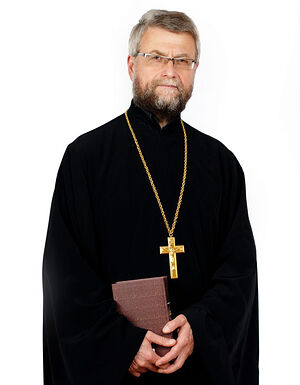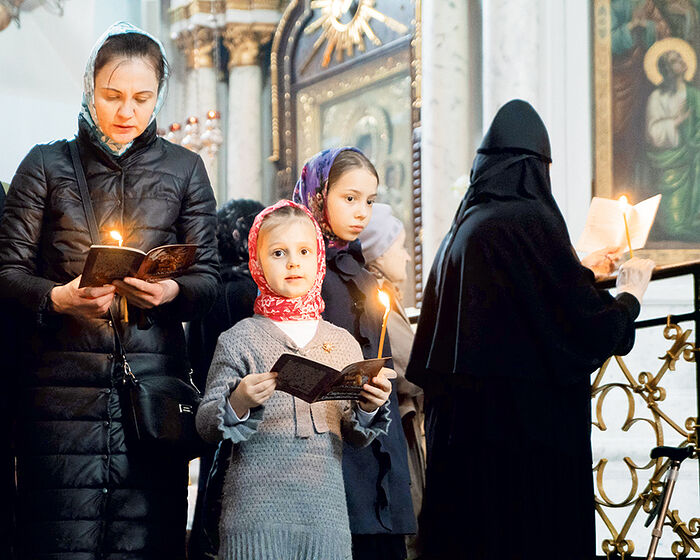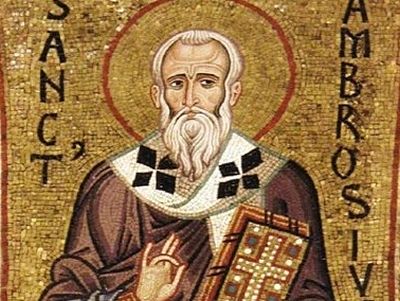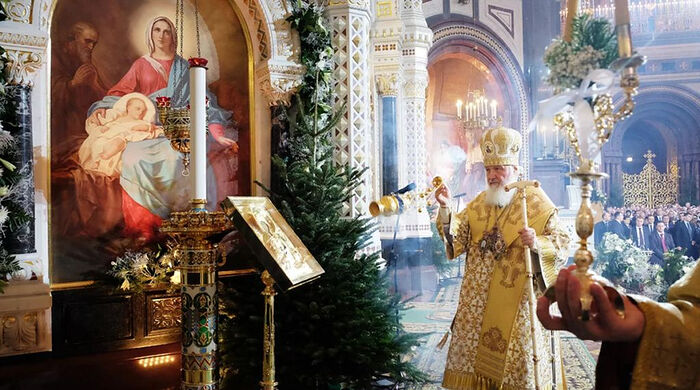Is there a “structure” of the Nativity Fast? Why did they fast for only seven days before the Nativity in ancient times, but today we fast for forty days? And what is the culmination of the feast of the coming of the Savior into the world? We talked about this with Archpriest George ZavershinskyZavershinsky, George, Archpriest
“>Archpriest George Zavershinsky, the dean of the parishes of the Diocese of Sourozh in Northern Ireland, who holds a Ph.D in Philosophy and Technical Science, a Masters in Theology, and is a member of the Russian Writers’ Union.
 Archpriest George Zavershinsky —Father George, to begin our conversation, I suggest we show our readers the meaning and logic of the Nativity Fast, which does not have such a clear structure as Lent. What should believers who observe the
Archpriest George Zavershinsky —Father George, to begin our conversation, I suggest we show our readers the meaning and logic of the Nativity Fast, which does not have such a clear structure as Lent. What should believers who observe the  The Nativity FastThe Nativity Fast
The Nativity FastThe Nativity Fast
“>Nativity Fast be guided by? Is it possible (and necessary) to divide the forty days of waiting for the meeting with the Savior into certain milestones? How do you see the Nativity Fast for a Christian in comparison with other periods of self-restriction?
—Fasts usually precede major Church feasts. We have four long fasts in the year: Lent before Pascha, the Apostles’ Fast before the feast of the Holy Apostles Peter and Paul, the Dormition Fast before the feast of the Dormition of the Most Holy Theotokos and, lastly, the Nativity Fast before the Nativity of Christ. This fast is equal in duration to Lent (excluding Holy Week)—it is “forty days of fasting” as well. It is quite strict: on Mondays, Wednesdays and Fridays abstaining from boiled food is recommended, not to mention meat, dairy products and fish. On the whole, it is a real fast.
On the days of fast “Alleluia” is sung at Matins. It means that the general Typikon requires the reading of the Prayer of St. Ephraim the Syrian with bows. It is not often done and is usually at the discretion of the rector. And when “Alleluia” is sung, as we know, the Liturgy is not celebrated. So was it prescribed by the ancient Typikon. In general, especially during Lent, abstinence is not so much gastronomic as it is liturgical, because Christians abstain from the great joy that participation in the Divine Liturgy and Communion of the Holy Body and Blood of Christ gives them.
The “forty days of the Nativity Fast”, or St. Philip’s Fast (it begins on the feast of the Apostle Philip and continues until the feast of the Nativity of Christ), unlike Lent, has no obvious “phases” or any certain structure. And yet they can be traced.
First of all, there is the feast of the Entrance of the Most Holy Theotokos into the Temple. This is the beginning of the story of the Savior’s coming into the world, His Birth, earthly life, death on the Cross and Resurrection. Why? Because the Virgin is led into the Holy of Holies, where only once a year the high priest enters—not without sacrificial blood and not only for his sins, but also for the sins of the people. The coming of the Messiah is being prepared in the world. The Birth of Jesus Christ is the fulfillment of the law and filling it with living content.
I would single out the following stages in the structure of the Nativity Fast: The first is the Entrance of the Most Holy Theotokos into the Temple, the second is Advent and Christmas according to the Western tradition on December 24–25, and the third is the New Year preceding the feast, and the Nativity itself.
There are also secular stages of this fast. The fact is that Christmas in the West is more of a family, secular festival rather than a religious one. It probably wasn’t always like that, but since recently it’s has been. The New Year is a secular and family holiday, but we are drawing nearer to the solemn and joyful event of the Savior’s Birth. The occasion for a family gathering is wonderful to mark it as a step to the feast of the Nativity of Christ.
For some the main festivity is the New Year, for others—those who follow the Western tradition and live in Western countries—it’s Christmas. But for us the main stages remain the run-up to the Nativity.
I serve in the West, and local populations have already gotten used to the fact that Christmas is widely celebrated everywhere on December 24–25, and the New Year—to a lesser extent. As for us, we continue our journey to the great feast of the Nativity of Christ.
These are stages to this feast, so that our hearts can be filled with joy. At the same time, of course, we should observe this fast not so much with the purpose of “performing a gastronomic rite” as to fulfill the long journey that crowns the feast of the Nativity of Christ with meaning.

—But still, fasting is often reduced to food restrictions. No matter how much we say that the human soul and relations with your neighbor are above all, everything usually starts with food and ends with it. But what if it is physically difficult for a person to observe the food aspect of fast? How can we find a compromise on this issue?
—Yes, of course, we say that the soul, the faith and our trust in God are above all. Why does everything “start” with food and “end” with it? According to one expression, “a person is what he eats.” But it should be taken into account that our inner, spiritual state largely depends on what kind of food we choose. During the fast, delicious, nutritious food is forbidden to us. This is our inner, spiritual self-restriction. After all, we understand that discipline in food is necessary as well as in spiritual life.
However, during the fast we must not only observe the food restrictions, but also follow strictly the prayer rules that help us stay on the spiritual path, by which fasting leads us to our meeting with the Lord.
The Nativity Fast frees the space of our souls so that the Savior can be born in them. Not the Savior of the general mass of people, but a personal One—mine, yours, his and hers…
Can fasting be harmful to us? Yes, of course it can. And here we need to keep a balance, not try to be “holier than the Pope” by excessively limiting ourselves in food and therefore experiencing psychological difficulties. People close to us may even suffer from our overzealousness, so food restrictions should be gradual.
We live for decades; the current Nativity Fast is not the first one in our lives, and God willing, not the last. If in the past we allowed ourselves some excesses during the fast, this time we should limit ourselves and should not seek sensual pleasures. At the same time, we give our heart, our spiritual organ, to God to act in our lives.
—In ancient times, fasting before the Nativity lasted only seven days. What was reason for this change in Nativity Fast’s duration?
—Yes, in ancient times fasting before the Nativity indeed lasted only seven days. This fact was mentioned by such saints as  St. Ambrose of MilanBorn in 340, the son of the Roman prefect of Gaul, St. Ambrose returned to Italy with his mother and his sister, St. Marcellina, after the death of their father. There he studied and became such a gifted orator and lawyer that the governor of northern Italy, charging him to ”govern more like a bishop than a judge,” selected him to be his successor in the capital of Milan.
St. Ambrose of MilanBorn in 340, the son of the Roman prefect of Gaul, St. Ambrose returned to Italy with his mother and his sister, St. Marcellina, after the death of their father. There he studied and became such a gifted orator and lawyer that the governor of northern Italy, charging him to ”govern more like a bishop than a judge,” selected him to be his successor in the capital of Milan.
“>St. Ambrose of Milan and St Augustine the Bishop of HippoSaint Augustine was born in the city of Thagaste in northern Africa. He was raised by his mother, St Monica (May 4), and he received his education at Carthage.”>Blessed Augustine in the fourth century. In the fifth century it was believed that the tradition of a seven-day Nativity Fast had existed since the earliest times, although the duration of the fast varied in different communities.
In 1166, it was suggested that the fast be for forty days everywhere, so that the central feast—the Nativity—could become even more significant, and Christians should prepare properly for their meeting with it by laboring for God and for other people. These changes seem to be related to the fact that the Nativity of Christ took the central place in the universal Church tradition.

—We speak much about fasting. How are a Christian’s temperance during the Nativity Fast and the meeting of one of the greatest Christian feasts interrelated? What is the significance of the feast of the Nativity of Christ for humanity as a whole and for each individual?
—Much has been said about this. The Christian’s temperance during the Nativity Fast and the meeting of one of the greatest Christian feasts are closely interrelated. Self-restraint, denigrating yourself in something is always hard, but it fills you with joy and gratitude to the Lord and longing for Him. These feelings give us the opportunity to get to know God Who was Born, came into the world, passed from life to life, rose from the dead, and is filled with love, mercy and compassion for humanity. This is how we see the feast today.
2000 years ago, the perception of the Nativity of Christ was different, although there are many similarities. God’s Judgment of humanity extends from the beginning to the end of history. The evidence that the Judgment is in process is the fact that God was born among people. This is an all-encompassing act of history, its culmination. That’s how we Christians see it.
—In conclusion, I would like to clarify once again how Orthodox Christians should spend the feast of the Nativity of Christ?
—Traditionally: Attend the night service, where the faithful are given Communion with the appearance of the first star.